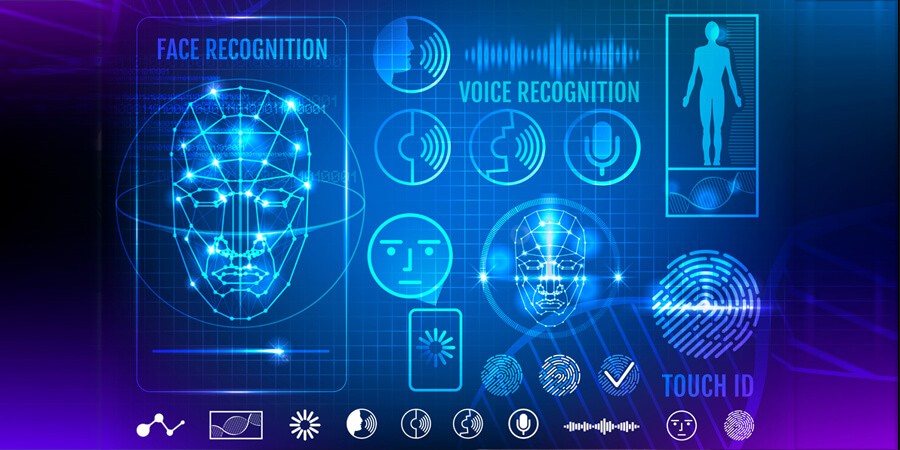Mobile development has become a priority and the new normal for many businesses. Without embracing mobile-optimized solutions, companies undoubtedly risk losing a significant number of clients and lagging behind the competition. Since the security of sensitive data remains a primary focus with regard to mobile devices, more advanced technologies are being implemented to ensure their protection. To this end, the system of biometrics is gaining popularity.
Biometrics is the measurement and analysis of people’s physical characteristics. Such characteristics are unique to each individual; therefore, biometric technology is often used to identify individuals, giving rise to biometric authentication as a form of identification and access control. According to Statista, the global biometric system market is expected to grow from USD $42.9 billion in 2022 to $82.9 billion by 2027, at a CAGR of 14.1%.
Types of Biometrics for Mobile Apps and Devices
Biometric mobile apps come (are sold) in many forms. In addition to these stand-alone apps, biometric logins are usually integrated into a larger mobile app interface, an IoT device or even the operating system of a device that demands high levels of security. Most of the common biometric authentication techniques include:
- Fingerprint scans: Fingerprint scanning entered mainstream usage in 2013 with Apple’s release of the iPhone 5S. Due to the uniqueness of fingerprints, it is a very secure and reliable biometric authentication technique, even for twins. This form of authentication works by identifying key markers on a verified fingerprint. The user’s fingerprint is then captured during the login process and compared to the verified master. If all the key markers align, access is granted. Users cannot fool the system with a molded reproduction of the authorized user’s digit without these unique properties.
- Iris scans: The iris scan is said to be nearly impossible to replicate, so it’s a natural choice for biometric security applications. Every eye is unique, with different colorations and flecks, as well as a slight difference between the left and right eye, which allows the iris to be extremely accurate at authentication. To start the process, a high-tech eye scanner maps your eye’s iris. Then, the app identifies key measurable spots on the iris, with a higher number of such designated marker points correlating with a higher level of security. In order to be authenticated, the eye presented must match these measurable points.
- Facial scans: Facial recognition technology has seen major advances in recent years. Such technology is now being used in mobile devices with biometric security apps. Unlike iris scans or fingerprints, this biometric technology does not require a special scanner; simply looking through the device’s camera input is sufficient to verify your identity. Facial recognition technology works by laying a digital grid over an image of the individual’s face. The grid is then used to evaluate the geometry of the person’s facial features, such as the distance between the eyes or the angles connecting key dotted markers. Alas, some companies, including Samsung, have identified a major flaw: the facial recognition system can be fooled by a photo. However, it is possible that this fault may be remedied in the near future.
- Voice recognition: Natural language processing (NLP), the technology which enables Siri and Alexa to understand what users say, has unsurprisingly advanced alongside voice recognition technology. Voices are converted into digitized maps that are compared to master copies when used for authentication. However, voice recognition is a bit less secure than some other biometrics, as voices can change due to illness or allergies. Also, digital recordings do distort the voice, so developers will in all likelihood refine voice recognition technology to detect digitized vocal renderings. Doing so will make it extremely challenging to trick a voice recognition-based biometrics security app in the future.
Africa Embracing Biometrics
Through biometric solutions, people’s unique physical characteristics can be measured and utilized. Typically, fingerprints, facial recognition and iris scans are used to authenticate identities. The Africa and Middle East biometrics market is forecast to grow at an annual rate of 21%, with the global biometrics industry set to reach USD $82 billion by 2027, according to the “Biometrics, Global Market Trajectory & Analytics 2020” report. It’s not difficult to understand the attraction of biometric identification. As an example, with the help of the World Bank, the Zimbabwean Public Service Commission introduced a biometric system and conducted an audit in 2020, which identified 3,000 “ghost workers” and removed them from the payroll.
What Makes Biometric Security Better Than Other Authentication Methods?
The inherent benefits of biometrics make them the top choice for many all-encompassing security levels:
- No one can lose or forget their fingerprint, face or iris.
- Each person’s biometrics is unique.
- The eyes, fingerprints and the geometry of the face remain constant over time.
- It is extremely difficult, if not impossible, for another person to accurately replicate or steal the body parts or details used for biometric authentication.
Biometric logins are an ideal security measure, whether integrated into a financial app or part of a two-factor authentication requirement to unlock a device. It’s possible that we could soon see biometrics take the place of keys, including to our offices, our cars or our homes. Instead, the door or vehicle will open using an app that verifies our identities. In the world of biometrics IoT integration, visionary entrepreneurs are turning to innovative developers to make this future a reality.






